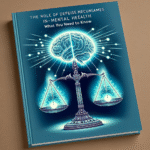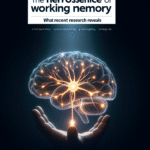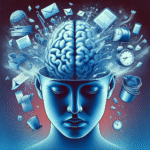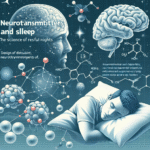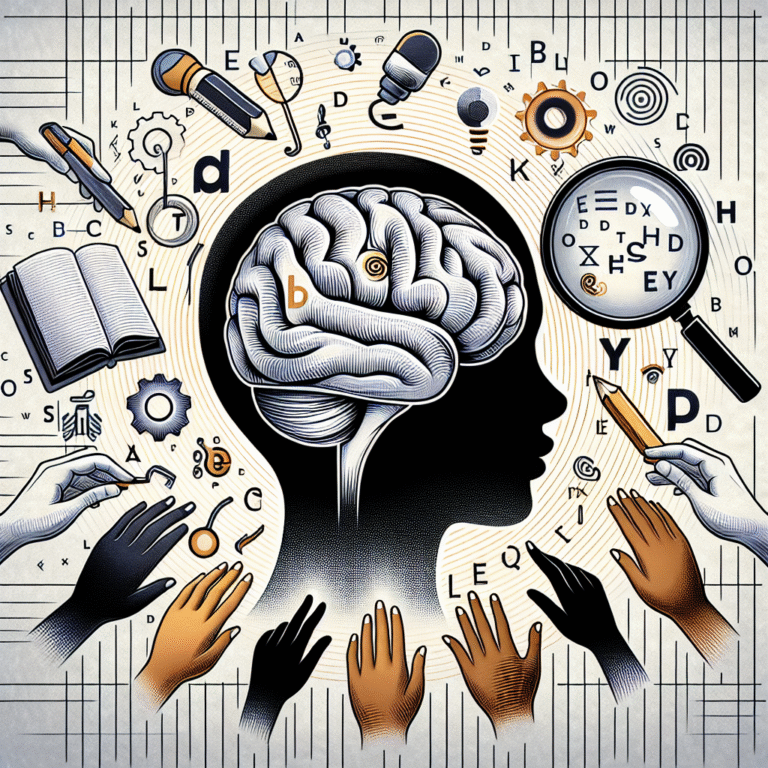
Breaking the Silence: Understanding the Link Between Learning Disabilities and Depression in Children and Teens
Introduction: Bridging the Gap Between Learning and Mental Health
In the labyrinthine journey of education, children and adolescents often navigate various obstacles that can profoundly impact their mental health. Among these, the struggle with learning disabilities stands out, quietly sowing seeds of despair. Breaking the Silence: Understanding the Link Between Learning Disabilities and Depression is more crucial now than ever. Alarmingly, a significant number of children grappling with learning disabilities also experience co-occurring mental health issues, particularly depression. As educators, parents, and mental health professionals, we need to shed light on this important topic, providing insights to empower those affected.
The Intersection of Learning Disabilities and Depression
Learning disabilities—including dyslexia, ADHD, and dyscalculia—affect how individuals process and understand information. These challenges can lead to feelings of inadequacy, frustration, and loneliness, often escalating into mental health issues such as depression. This section will explore the statistics that underline the prevalence of depression among individuals with learning disabilities.
Statistical Insight
Research indicates that students with learning disabilities are at a higher risk of developing depression. A recent study revealed:
- 40% of students with learning disabilities are prone to depression—a stark contrast to the general student population which reports rates around 10-15%.
The Vicious Cycle
- Learning Difficulties: Struggling academically can lead to critical performance gaps.
- Social Isolation: Difficulty in communicating or participating in group activities can lead to fewer friendships and increased feelings of loneliness.
- Depressive Symptoms: Feelings of hopelessness can set in, creating a cycle in which learning becomes even more challenging.
Case Study 1: Emma’s Journey Through Learning Disabilities and Depression
Meet Emma, a bright-eyed eleven-year-old who loves drawing but struggles with reading. Diagnosed with dyslexia, her difficulty decoding words led to repeated negative feedback in school. Over time, Emma’s self-esteem took a hit, and she began withdrawing from friends and family. She was later diagnosed with depression, highlighting the crucial link noted in Breaking the Silence: Understanding the Link Between Learning Disabilities and Depression.
Analysis
Emma’s story illustrates the immediate impact that learning disabilities have on mental health, creating a compelling case for early intervention and a supportive environment. Recognizing such challenges can foster a more compassionate approach among educators and peers, paving the way for emotional healing.
Emotional Symptoms of Depression Linked to Learning Disabilities
Understanding the emotional trajectory of children with learning disabilities can illuminate why many of them experience depression. Here are some common symptoms:
- Irritability and Anger: Often misinterpreted as behavioral issues, these emotions are frequently rooted in frustration.
- Withdrawal: A tendency to isolate stems from negative experiences at school or in peer relations.
- Low Self-Esteem: Constant academic challenges can create a skewed self-image, leading to deep-seated feelings of inadequacy.
Support Strategies for Students with Learning Disabilities
Recognizing the connection between learning disabilities and depression calls for proactive strategies. Below are some effective measures that can provide support and alleviate depression.
Creating an Inclusive Classroom Environment
- Tailored Learning Plans: Implement Individualized Education Programs (IEPs) to meet each student’s unique needs.
- Emotional Support: Incorporate counselors and psychologists into the academic setting for easy access to mental health services.
- Peer Support Programs: Foster supportive peer relationships through mentoring and buddy systems.
Parental Engagement
Parents must cultivate open channels of communication with their children regarding their struggles. Encouragement and reassurance can significantly boost a child’s morale. Here are a few recommended practices:
- Positive Reinforcement: Celebrating small victories can build self-esteem.
- Routine Discussions: Regularly discussing feelings can demystify mental health, making it a manageable topic rather than a taboo.
The Role of Educators in Advocacy
Educators play a pivotal role in addressing the dual challenges of learning disabilities and depression. Here’s how:
-
Early Identification: Training educators to recognize signs of both learning disabilities and emotional distress can facilitate early intervention.
-
Creating Awareness: Workshops on mental health can educate staff on how to support students with learning disabilities effectively.
- Collaboration with Families: Maintaining clear communication with families can ensure consistency in approach and support.
Case Study 2: James’s Path to Healing
James, a seventeen-year-old boy diagnosed with ADHD, struggled in high school, leading him to feel overwhelmed and isolated. His academic challenges mirrored his frustrations at home, prompting his parents to seek counseling. Through therapy and academic accommodations, James started to thrive academically and emotionally.
Analysis
James’s experience exemplifies the importance of seeking help and the significant role that academic support plays in mental well-being. His story emphasizes how tailored educational environments can facilitate healing and growth, bridging the chasm between learning disabilities and depressive symptoms.
Notable Data Trends
Fundamental to Breaking the Silence: Understanding the Link Between Learning Disabilities and Depression is the analysis of prevalent data that reveals rising concerns among various demographics.
| Data Set | Statistic | Implication |
|---|---|---|
| Children with LDs experiencing depression | 40% | High vulnerability necessitates robust support systems. |
| Rise in mental health cases among students | 30% over the past decade | Alarming trend requiring educational reform. |
| Peer relationships | 50% struggle with friendships | The need for social skills training. |
Conclusion: A Call to Action
As we delve into Breaking the Silence: Understanding the Link Between Learning Disabilities and Depression, it becomes evident that empathy, combined with effective strategies, can lead to positive outcomes. It is a collective responsibility to create a supportive environment for children grappling with learning disabilities. Through awareness, innovative teaching methods, and mental health support, we can foster resilience and hope, ensuring that every child thrives—both academically and emotionally.
FAQs
-
What are learning disabilities?
Learning disabilities are neurological disorders that affect the brain’s ability to receive, process, and respond to information, often manifesting in reading, writing, or math challenges. -
How common is depression among children with learning disabilities?
Studies show that around 40% of children with learning disabilities also experience symptoms of depression, highlighting the need for early intervention. -
What are the first signs of learning disabilities?
Early signs may include difficulty with reading or writing, trouble learning to speak, difficulty remembering math facts, or challenges in understanding complex instructions. -
Can learning disabilities and depression be treated together?
Yes, an integrated approach that involves special education strategies and mental health support can be highly effective in addressing both issues simultaneously. - What role can parents play in supporting their children?
Parents can provide emotional support, advocate for necessary educational resources, and maintain open lines of communication regarding their child’s struggles.
In summary, Breaking the Silence: Understanding the Link Between Learning Disabilities and Depression fosters a discourse that opens the door to healing and success for countless families. By promoting awareness and supportive strategies, we can help children navigate their academic and emotional landscapes with confidence.
